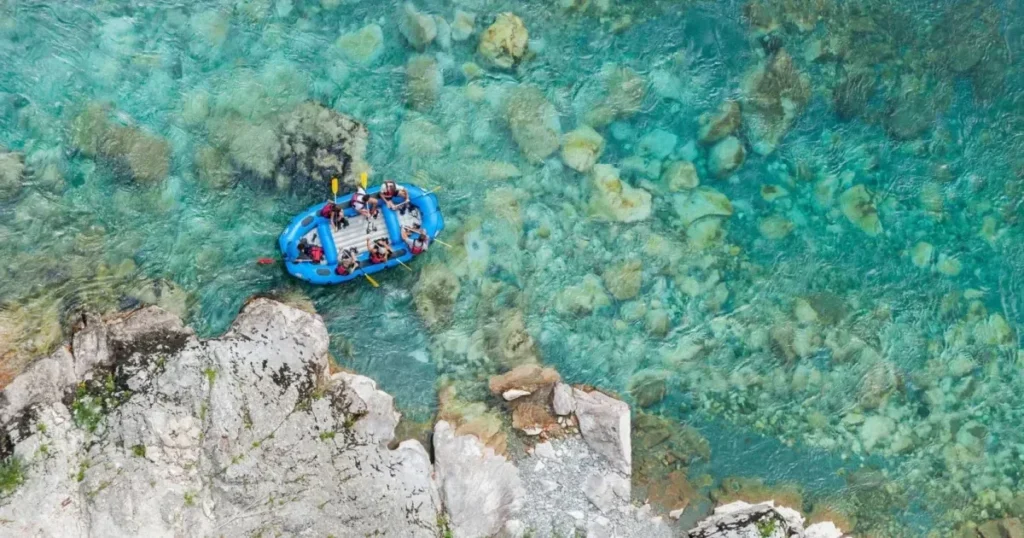An insatiable independence
Montenegrins are as tough as they come. For centuries, the tiny mountain nation battled much larger armies who came to conquer it, managing to retain its independence in the face of seemingly insurmountable odds. Montenegro resisted the Ottoman Empire for hundreds of years, surviving long after its neighbours fell. It isn’t a stretch to say that its national identity is built on this relentless desire for independence.
Cetinje, the old royal capital of Montenegro | © Veronika Kovalenko / Shutterstock
Political deja-vu
Some things never change in Montenegro, and the government seems to be one of them. The same party has been in charge since 1990, although that stretches way back to 1945 if you allow for the communist roots of the ruling Democratic Party of Socialists. Current president Milo Đukanović has been the number one politician in the country since taking over in 1997, although he has been at the top table since 1991 at least. There are frequent elections in Montenegro, but all seem to have similar results. Đukanović is in many ways indicative of the Balkan political strongman — adored by many around the country, despised by the young and educated in the cities.
Art as a meaning to live
Montenegrins have a very close connection with the art that their people have produced. There is an old joke that when the Ottoman Army approached Cetinje, the locals made sure to remove all the art before coming together as an army to repel the approach. That might be a bit of an overstatement, but this little nation is fiercely protective and intensely proud of the visual art it has created. Artists like Milo Milunović, Dado Đurić and Risto Stijović took Montenegrin culture with them all over the world, putting the small state on the map in the process.
Historic fortress Biljarda in the center of city Cetinje, built for the Montenegrin ruler Njegoš in 1838 | © Aleksei Golovanov / Shutterstock
Celebrations must be celebrated
That might seem like stating the obvious, but the people of Montenegro are particularly passionate when it comes to celebrations. Weddings, birthdays, christenings, graduations and more are greeted with a genuine excitement and joy, along with plenty of rakija. Don’t be surprised to see someone bust out a bottle of the fruit brandy after hearing the weather is going to be good at the weekend.
In a typically macabre Montenegrin way, no celebration is as intensely honoured as the funeral. Attendance is mandatory, and it can seem as though eating and drinking your weight is every bit as obligatory.
Become a Culture Tripper!
Sign up to our newsletter to
save up to $1,656 on our unique trips.
Don’t worry, it isn’t a pint of rakija | © Mihailo Jovanović / WikiMedia Commons
Putting influences on plates
Despite its fierce independence, Montenegro has found itself under the occupation of many different rulers over the centuries. The dominant two were the Venetians and the Ottomans, so it is no surprise to see big Italian and Turkish influences when it comes to the cuisine of the country. This creates a curious mixture of Mediterranean vegetables and seafood alongside succulent grilled meat and saccharine sweets. The influences are clear, but the end result is distinctly Montenegrin.
Grapes used to make Vranac wine in Montenegro | © Chris Mellor / Alamy Stock Photo
This isn’t Serbia
Despite declaring independence in 2006, Montenegro still gets lumped in with Serbia by many. The two are very closely linked historically, but don’t make the mistake of assuming life in the two nations is much the same. That fierce independent spirit the Montenegrins are known for may well come firing out, and that is a tirade you want no part of. The relationship between Serbia and Montenegro is not unlike that of loving brothers, albeit loving brothers that might knock each other out from time to time.
Monastery of Serbian Orthodox Church in Montenegro | © Ivan Kuznetsov / Alamy Stock Photo
Family is everything
Continuing with the family theme, life begins and ends at home in Montenegro. Ancestry and lineage are extremely important in this part of the world, and no word is as iron as that of the oldest living member of the brood. Montenegrins possess a deep love and respect for family that can often get in the way of personal development, but the old adage that there is no place like home certainly rings true here.
Culture Trips launched in 2011 with a simple yet passionate mission: to inspire people to go beyond their boundaries and experience what makes a place, its people and its culture special and meaningful. We are proud that, for more than a decade, millions like you have trusted our award-winning recommendations by people who deeply understand what makes places and communities so special.
Our immersive trips, led by Local Insiders, are once-in-a-lifetime experiences and an invitation to travel the world with like-minded explorers. Our Travel Experts are on hand to help you make perfect memories. All our Trips are suitable for both solo travelers, couples and friends who want to explore the world together.
All our travel guides are curated by the Culture Trip team working in tandem with local experts. From unique experiences to essential tips on how to make the most of your future travels, we’ve got you covered.
Source link : https://theculturetrip.com/europe/montenegro/articles/9-things-you-should-know-about-montenegros-culture
Author :
Publish date : 2018-08-29 07:00:00
Copyright for syndicated content belongs to the linked Source.
